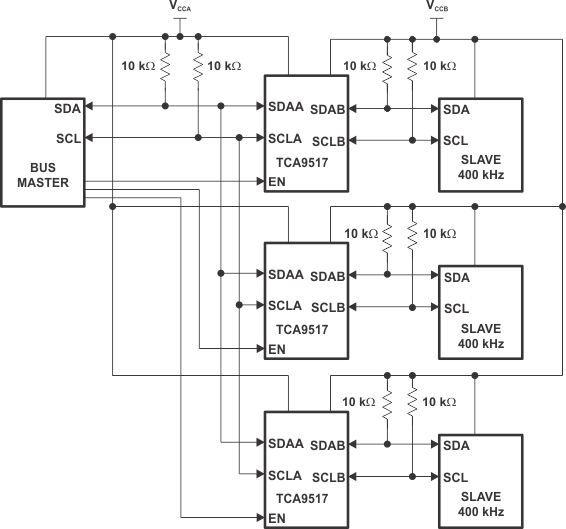ZHCSAT1D December 2012 – July 2017 TCA9517
PRODUCTION DATA.
10.2.2.2 VILC and Pullup Resistor Sizing
For the TCA9517 to function correctly, all devices on the B-side must be able to pull the B-side below the voltage input low contention level (VILC). This means that the VOL of any device on the B-side must be below
0.4 V.
VOL of a device can be adjusted by changing the IOL through the device which is set by the pull-up resistance value. The pull-up resistance on the B-side must be carefully selected to ensure that logic levels will be transferred correctly to the A-side.
 Figure 8. Typical Star Application
Figure 8. Typical Star ApplicationMultiple A sides of TCA9517 s can be connected in a star configuration, allowing all nodes to communicate with each other.
 Figure 9. Typical Series Application
Figure 9. Typical Series ApplicationTo further extend the I2C bus for long traces/cables, multiple TCA9517 s can be connected in series as long as the A-side is connected to the B-side. I2C bus slave devices can be connected to any of the bus segments. The number of devices that can be connected in series is limited by repeater delay/time-of-flight considerations on the maximum bus speed requirements.
 Figure 10. Bus A (0.9 V to 5.5 V Bus) Waveform
Figure 10. Bus A (0.9 V to 5.5 V Bus) Waveform Figure 11. Bus B (2.7 V to 5.5 V Bus) Waveform
Figure 11. Bus B (2.7 V to 5.5 V Bus) Waveform